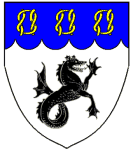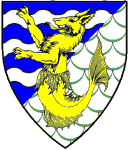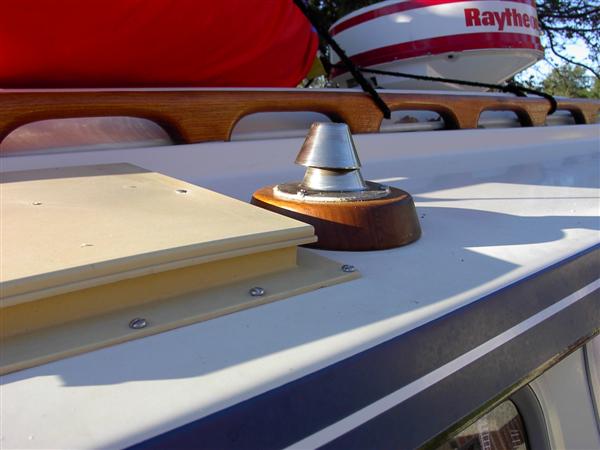| View previous topic :: View next topic |
| Author |
Message |
dchurch3
Joined: 13 Jul 2007
Posts: 20
City/Region: Mukilteo
State or Province: WA
C-Dory Year: 2007
C-Dory Model: 25 Cruiser
Vessel Name: C-Cruiser
Photos: C-Cruiser
|
 Posted: Thu Aug 02, 2007 1:55 am Post subject: Moisture Posted: Thu Aug 02, 2007 1:55 am Post subject: Moisture |
 |
|
I am still considering the purchase of a C Dory and am wondering what the moisture problem is that some have referenced? Whats the cause and how is it dealt with?
_________________
Dave |
|
| Back to top |
|
 |
Doryman
Joined: 03 Oct 2006
Posts: 3807
City/Region: Anacortes
State or Province: WA
C-Dory Year: 2006
C-Dory Model: 255 Tomcat
Vessel Name: Lori Ann
Photos: Lori Ann
|
 Posted: Thu Aug 02, 2007 2:00 am Post subject: Posted: Thu Aug 02, 2007 2:00 am Post subject: |
 |
|
So far have not experienced any condensation to speak of after cruising with the Tom Cat. Might be different in the fall.
Warren
_________________
Doryman
M/V Lori Ann
TomCat 255, Hull #55, 150 Yamahas
Anacortes, WA
 |
|
| Back to top |
|
 |
Sea Wolf
Joined: 01 Nov 2003
Posts: 8650
City/Region: Redding
State or Province: CA
C-Dory Year: 1987
C-Dory Model: 22 Cruiser
Vessel Name: Sea Wolf
Photos: Sea Wolf
|
 Posted: Thu Aug 02, 2007 2:46 am Post subject: Posted: Thu Aug 02, 2007 2:46 am Post subject: |
 |
|
Dave-
There are two condensation problems commonly experienced in these boats:
1.) Condensation on the windows when underway in rain, snow, and other cold, moist situations, and..
2.) Condensation on the inside walls of the cabin from moisture originating from breathing, which is especially noticable when sleeping in the boat at night.
*****************
The windows problem requires two or more fans placed near and directed on the front windows, and can be helped greatly by the use of a cabin heater to raise the ambient temperature. Additionally, all really safe cabin heaters that burn fuel of some type are externally vented, so 1.) the combustion moisture from their burning fuel is vented outside the cabin, and 2.) they help eliminate cabin moisture through their use of air for combustion. Window condensation at rest can also be controlled somewhat by an electric heater when on shore power, but some provision must be made to vent some cabin air to eliminate excessive moisture. Also, RAIN-X and others make solutions that can be placed on the inside of windows to limit condensation, much in the same way they do on diver's masks.
*****************
Condensation on the walls, particularly at night during sleeping, produces the "Wet Cave" effect! Moisture from respiration can amount to a liter or more per person (if I remember Dr. Bob's post correctly). Condensation of this water vapor into liquid on the cabin walls and windows in cold weather is bothersome and unplesant to say the least. Several possible solutions are possible, and often they're used in combination.
A.) Open (crack) a window for ventilation to let some of the moisture out.
B.) Run a heater to keep the temperature up and help remove moisture as it uses up cabin air for combustion. (Second half not applicable to electric heaters.)
C. Spray foam insulation (See the "Pain Free Insulation Solution" thread by B~C), or cover the inside of the cabin with carpet or special insulation padding that can be applied to the walls with spray adhesive. These help to eliminate the cold surfaces that help support condensation.
D. Treat the windows with RAIN-X as above.
E. Draw straws or play Strip Poker with the looser sleeping and breathing out in the cockpit!  NOT! NOT!
****************
It helps to have a good heater on board with at least two if not three or more 12 volt fans to move the air around and in and out. I like to have some of them moveable (mounted to Stanley squeeze clamps) so that they are adaptable to different uses. I also like two or three speed ones, and fans that can be set to either oscillate back and forth or remain stationary.
One other point: Going in and out of the cabin to an uncovered cockpit in the rain brings moisture into the cabin in such amounts that you may not be able to keep up with eliminating it. Best to fish with a covered cockpit in those conditions!
Generally, however, condensation on a C-Dory is mostly just an annoyance, and can be delt with effectively with a little thought!
HTH!
Joe. 
_________________
Sea Wolf, C-Brat #31
Lake Shasta, California
  
"Most of my money I spent on boats and women. The rest I squandered'. " -Annonymous
Last edited by Sea Wolf on Thu Aug 02, 2007 10:09 am; edited 1 time in total |
|
| Back to top |
|
 |
rogerbum
Joined: 21 Nov 2004
Posts: 5928
City/Region: Kenmore
State or Province: WA
C-Dory Year: 2008
C-Dory Model: 255 Tomcat
Vessel Name: Meant to be
Photos: SeaDNA
|
 Posted: Thu Aug 02, 2007 10:04 am Post subject: Posted: Thu Aug 02, 2007 10:04 am Post subject: |
 |
|
Just a quick addition to what Joe said.. It's important to note that this type of problem - e.g. condensation from moisture while breathing - is a general problem with all boats of this size and similar construction. Unless you have a lot if insulation, simply breathing in a small volume generates moisture. Most of us lose about 1 pound of water weight each night which is about a pint of moisture into the air (weigh yourself just prior to going to bed and just after waking up). In a big volume, this amount of moisture goes unnoticed or can be held in the air. In a small volume (like a v-berth), it's very noticeable. As Joe says, the best solution is ventilation + a little heat (when it's not too hot).
_________________
Roger on Meant to be |
|
| Back to top |
|
 |
Sarge
Joined: 12 Mar 2007
Posts: 488
City/Region: Edmonds
State or Province: WA
Vessel Name: Sea Badger
Photos: Gigi
|
 Posted: Thu Aug 02, 2007 10:29 am Post subject: Posted: Thu Aug 02, 2007 10:29 am Post subject: |
 |
|
Dave,
I'm just down the shore from you in Edmonds, where my boat sits in the water 24/7/365.
If you want to SEE how I avoid the moisture problem, then send me a PM and I'd be glad to show you my boat and speak to you in person about my experience.
For conversation sake, moisture in a boat is a common issue. Everything I use to keep it in check is available through West Marine or advertised in SEA magazine. They are common items in the boating world.
_________________
-Sarge
2001 2150 Bayliner, sold
2007 CD25, sold
2007 Harbercraft Kingfisher 2850, sold
2011 Stabicraft 2250SC, sold
2011 Eastern 18cc
Blog: http://theseabadger.wordpress.com |
|
| Back to top |
|
 |
Sea Wolf
Joined: 01 Nov 2003
Posts: 8650
City/Region: Redding
State or Province: CA
C-Dory Year: 1987
C-Dory Model: 22 Cruiser
Vessel Name: Sea Wolf
Photos: Sea Wolf
|
 Posted: Thu Aug 02, 2007 11:03 am Post subject: Posted: Thu Aug 02, 2007 11:03 am Post subject: |
 |
|
Just thought of another issue, which the effect of condensation when the boat is unoccupied, either moored or on the trailer.
Condensation left alone in an empty boat can lead to mildew (mold/fungus) problems.
There are several ways to deal with this, again utilized alone or in combination:
The main solution is to provide for ventilation.
This can be done with either a solar/electric powered vent:

or a passive vent, operating with with the action of simple convection currents (moving of warm air) inside the boat during the daily heat cycle:

cowl vent, used more commonly on larger boats, and with dorade box underneath to eliminate rain water as well as spray underway.
********************
C-Dory roof top showing crank up vent on the left and heater exhaust vent (stainless steel) on right, Both provide ventilation at rest and when underway. The crank up vent has a screen across it to keep out bugs, and if only opened a little bit, provides quite a bit of ventilation but still keeps rain out.

There are additional ways to deal with condensation at rest.
Some folks use an 120-volt electric heater specifically designed to drive condensation up and out of the lower cabin area. Ventilation of the cabin by one of the methods above then removes it from the boat.

Link to description is HERE. Many other types are available.
There are various configurations of these heaters, but the essential differences beween them and a home heater are that they are 1.) operating at a much lower temperature and electrical current draw, and that 2.) they are marine rated, which means they are designed to be sparkproof to insure against ignition of gasoline and other flamable vapors.
Additionaly, there are chemicals which are utilized to remove moisture from the air. These are desicated (dried out) crystals that are hydroscopic (attract and absorb moisture), but I can't see where they would absorb enough moisture to really get the job done in cold/humid climates.
********************
One other issue is moisture accumulating underneath the bedding in the V-berth where body moisture can accumulate in the bedding due to contact with the cold fiberglass panel underneath the sleeping area. The result is damp and cold bedding. Ick!
There are specific padding maetrials used tp combat this, and I'll let someone with experience with them describe them and their use. They usually come in flat stock and can be cut to fit the v-berth.
********************
That's all for now!
Joe. 
Last edited by Sea Wolf on Thu Aug 02, 2007 11:22 am; edited 2 times in total |
|
| Back to top |
|
 |
hardee
Joined: 30 Oct 2006
Posts: 12637
City/Region: Sequim
State or Province: WA
C-Dory Year: 2005
C-Dory Model: 22 Cruiser
Vessel Name: Sleepy-C
Photos: SleepyC
|
 Posted: Thu Aug 02, 2007 11:05 am Post subject: Moisture (Prevention) Posted: Thu Aug 02, 2007 11:05 am Post subject: Moisture (Prevention) |
 |
|
So far we have had very little moisture issue on Sleepy C. One of our first outings, with 6 adults on board and in the rain, it took a bit to get the fog of the inside window, but the fans, and keeping the windows ajar, did the job. When sleeping on board, we keep the fore-hatch open, the center front window open to the first notch, and the side windows open 2-4 inches generally.
I have been considering putting one of the Nicro Day/Night Plus Solar vents (West Marine prod # 7868490 for the 3" Stainless) in above the Wallas, (Starbd, aft cabin roof). Would be interested in comments on: How well the Solar vent works. and if the 600cfm would be adequate for 2 adults use. I know it would be better than none, but the time to change to the 1000cfm would be now before I start, rather than after the smaller one is in.
Would like to hear from anyone with experience with the Nicro vents, solar or not. Thanks,
Harvey
Sleepy C 
_________________
Though in our sleep we are not conscious of our activity or surroundings, we should not, in our wakefulness, be unconscious of our sleep. |
|
| Back to top |
|
 |
C-Dude
Joined: 05 Jul 2006
Posts: 89
City/Region: Anchorage
State or Province: AK
C-Dory Year: 2013
C-Dory Model: 22 Cruiser
Vessel Name: Gryphon
Photos: C-Spirit
|
 Posted: Thu Aug 02, 2007 12:34 pm Post subject: Posted: Thu Aug 02, 2007 12:34 pm Post subject: |
 |
|
I had similar condensation problems whcich I have solved in the following way:
1. Installed small 12V fans, 1 on the starboard and one on the port helm, they are adjustable and can be aimed at the area of highest condensation
2. Installed a 12V/Solar Nicro fan in the hatch over the v-berth
3. Run a Wallas heater/stove, which dries the air and does not add moisture (combustion air is exhausted)
These remedies are sufficient to deal with condensation here in Alaska |
|
| Back to top |
|
 |
Jeff and Julie
Joined: 26 Nov 2004
Posts: 287
City/Region: Juneau, AK
Vessel Name: Atka
|
 Posted: Sat Aug 04, 2007 2:38 pm Post subject: Posted: Sat Aug 04, 2007 2:38 pm Post subject: |
 |
|
C-dude,
Where did you get your fans? I like the style of them and have been looking for something like that.
Jeff and Julie |
|
| Back to top |
|
 |
|
|
You cannot post new topics in this forum
You cannot reply to topics in this forum
You cannot edit your posts in this forum
You cannot delete your posts in this forum
You cannot vote in polls in this forum
You cannot attach files in this forum
You cannot download files in this forum
|
|

 Search
Search Private Messages
Private Messages Profile
Profile Log in
Log in Register
Register Help
Help









